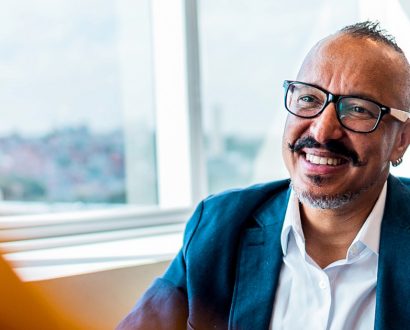We are at a pivotal moment in leadership – living in the most age-diverse time in human history, where demographic megatrends are reshaping the global workforce. This presents an extraordinary opportunity for business leaders to redefine how we lead by embracing the full spectrum of generational talent.
The most forward-thinking leaders recognize that merging the wisdom of seasoned professionals with the innovative perspectives and digital fluency of younger talent creates a dynamic and powerful force. In today’s world, where adaptability and innovation are crucial, intergenerational teams aren’t just a strategic advantage; they are a necessity.
As our workforce becomes more age-diverse, with more individuals working well into their 70s, organizations have a unique opportunity to revolutionize how they operate, innovate and lead. This isn’t just about managing age differences; it’s about harnessing the diverse skills, experiences and perspectives that each generation brings to the table.
How intergenerational teams enhance leadership
The narrative around intergenerational leadership is often laced with generation shaming and blaming, with cultural stereotypes in the driver’s seat. This tension demands a new, inclusive narrative – leaders need to shift the focus to intergenerational connection and collaboration.
Leadership in age-diverse teams not only improves decision-making and problem-solving, but it also builds social capital, encourages empathy and enhances job satisfaction.

Leadership in age-diverse teams not only improves decision-making and problem-solving, but it also builds social capital, encourages empathy and enhances job satisfaction.
Embracing generational diversity within leadership fosters a culture that values different perspectives, work styles and life experiences, leading to more innovative and resilient decision-making.
A World Economic Forum report states that intergenerational workforces build stronger pipelines of talent, and leaders who actively cultivate the distinct contributions of each age group can drive creativity and strategic growth.
Intergenerational collaboration drives business success
The old adage holds true: what gets measured matters. With only eight percent of organizations including age in their diversity, equity and inclusion strategy, it’s time for companies to recognize and embrace the one aspect of diversity that impacts us all – age.
Effective intergenerational leadership goes beyond mere coexistence; it involves intentional programming to build age-inclusive environments where every generation’s voice is heard and valued.

The secret to any intergenerational programming is to ensure it’s a ‘win–win’ – no matter our age, we all have something to teach and something to learn.
Employee Resource Groups present a ripe opportunity to cultivate more intergenerational connection and collaboration across the organization, with companies like Thermo Fisher Scientific creating a specific global business resource group (BRG) for their 122,000 employees, which focuses on cultivating intergenerational relationships.
The ‘Gen2Gen’ BRG goal is to create collaborative and inclusive work environments where all ages recognize strengths and share perspectives and opportunities to grow.
The secret to any intergenerational programming is to ensure it’s a ‘win–win’ – no matter our age, we all have something to teach and something to learn.
The tools for deeper intergenerational connection
To foster meaningful intergenerational connections, leaders should focus on the ‘win–win’ approach, with mutual mentoring programs being essential. Storytelling serves as a powerful bridge between generations, offering a shared path to deeper understanding.
Just as ancient cultures gathered around the fire to exchange wisdom, today’s workplaces can tap into lived experiences across age groups to promote learning and growth for all. By creating spaces where employees can share insights, organizations can drive collaboration and innovation, which will benefit every generation.

By exchanging personal stories, both mentors and mentees create a reciprocal learning environment, encouraging collaboration and a shared sense of purpose.
Pixar’s mutual mentorship program is a great example of this, rooted in vulnerability and the transformative power of storytelling. Pete Docter, Pixar’s Chief Creative Officer, illustrates this by candidly sharing the creative struggles during the production of Inside Out with emerging filmmakers.
His openness fosters transparency, which strengthens connections between mentors and mentees, showing how vulnerability builds trust.
By exchanging personal stories, both mentors and mentees create a reciprocal learning environment, encouraging collaboration and a shared sense of purpose. This approach breaks down generational barriers and highlights that everyone, regardless of age, has something valuable to contribute.
Age differences don’t have to divide us
In today’s workplace, age differences shouldn’t be a source of division but rather a path to greater strength. Employees want to be seen as individuals, not as stereotypes shaped by their birth year. Yet in an era marked by rising ageism and media-fueled generational blaming, navigating age differences can feel like a minefield.
Too often, leadership strategies get stuck in the cliches of what each generation supposedly wants while missing a vital truth – no matter our age, we are all human, each with unique experiences, insights and values.
To truly lead in today’s age-diverse world, we must move beyond these outdated narratives and embrace intergenerational connection as a cornerstone of effective leadership.

The future of leadership lies in seeing beyond age-based stereotypes and tapping into the full spectrum of generational talent.
It’s not just about understanding Millennials or managing Boomers – it’s about building human-centered strategies and intentional intergenerational programs that foster trust, open communication and mutual respect across all ages.
The future of leadership lies in seeing beyond age-based stereotypes and tapping into the full spectrum of generational talent. By fostering environments where every generation’s voice is valued, we unlock the potential for greater collaboration, innovation and, ultimately, stronger, more resilient leadership.
Age diversity, when approached with intention and care, isn’t a challenge – it’s an unparalleled opportunity for growth. A true win–win for employees and organizations.







